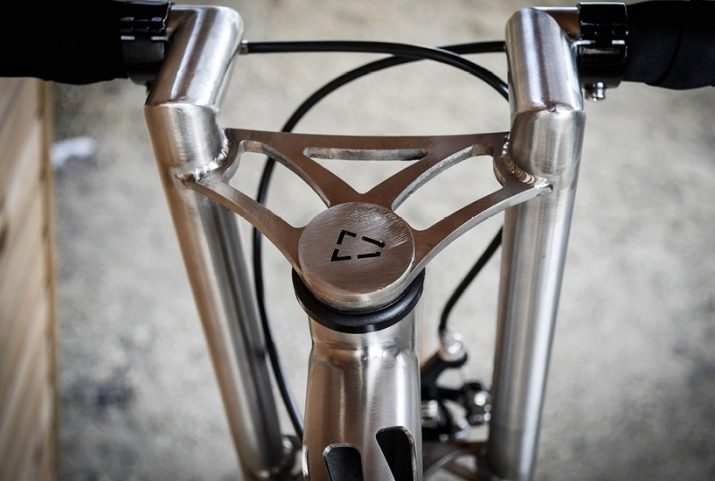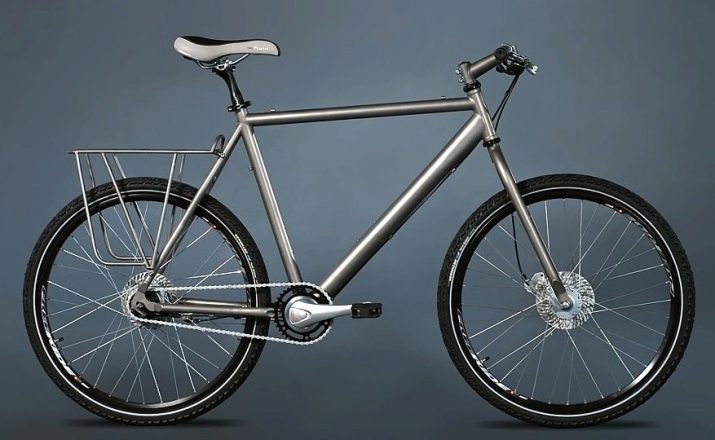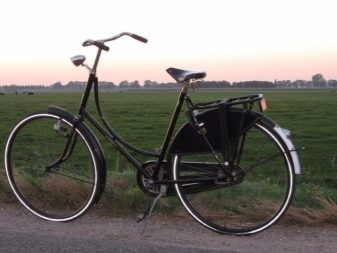Many beginner cyclists do not think about how much their bike weighs, and only after “winding” more than one hundred kilometers do they begin to ask this question. But experienced bikers, spending a significant part of their free time on wheels, consider the weight to be one of the most key characteristics and when choosing a new model, they try to find a middle ground between light weight and high quality bike.
What does mass depend on?
The weight of a bicycle is influenced by many factors, the determining ones being the mass of the frame and the number of attachments. The weight of the frame, in turn, depends on the material of manufacture, as well as on its size and configuration. For production, metals such as steel, aluminum, carbon and titanium are used.
- Steel frames They are distinguished by high weight, low price and are most often used by most Russian manufacturers involved in the production of budget bicycles. The advantages of steel frames include their high strength and long service life. Foreign manufacturers of bikes instead of low-carbon steel began to use chromium-molybdenum, which was a real breakthrough in bicycle production. Such designs weigh much less than their counterparts from "ordinary" steel and are no less reliable.
However, due to their high cost for mass production, they are not used and are in demand mainly by professional athletes.

- Aluminum frames their weight is much lighter than steel and they have good strength. They represent the largest group and are mounted on middle-class bicycles.You can distinguish an aluminum frame from a steel one by welds consisting of high and equal in height stitches resembling neat loops.
At their cost, aluminum frames represent the best value for money and are popular not only among amateur cyclists, but also among beginner athletes.

- Carbon or carbon fiber It is a new generation of material and is the lightest metal used to make frames. Its structure consists of carbon fibers tightly adjacent to each other, coated with a layer of polymer resins. Carbon frames are very expensive and are installed mainly on professional bikes. The disadvantages of carbon fiber include its maintainability, because of which it will be impossible to repair it if the frame breaks.

- Titanium frames are the most expensive and very reliable. Mounted on professional premium bikes.

Another important factor affecting the weight of the bike is the attachment. For example, the presence of a bag, mounts for a bicycle bottle, bell, wings and a bicycle computer increases the total weight of the bike by 2-4 kg. The pedals add to the total mass of 150 g, the footboard with fixing bolts - from 800 g to 1 kg, grips with a saddle - 400 g, and too wide wheels can add up to 0.5 kg of weight. Thus, in the presence of a complete "combat" kit, the total weight of the bike increases by an average of 5 kg.
What does this indicator affect?
The mass of the bicycle directly affects several basic parameters, such as stability, controllability, application of physical effort and coasting. With a decrease in bike weight, all four indicators improve, including stability.
By the way, it is she who causes a lot of doubts among novice bikers who mistakenly believe that the larger the weight of the bicycle, the more stable it is. However, this is not the case.
When riding a two-wheeled bicycle, a person holds him upright by controlling the center of gravity of his body. It is much more difficult to balance on a bike that is too heavy, since it takes more effort. As a result, light bike models are much preferable to heavy ones and surpass them not only in ease of operation, but also in safety. Therefore, before proceeding with the selection of a bike, it is necessary to know its weight.

Bike classification
The weight of the bike is greatly influenced by its specialization. Below are the main types of bicycles and their average weight.
Heavyweights
Belong to this group Touring and fatbikes. The first ones are hybrids of mountain and road bikeshave a solid steel (less often - aluminum) frame and large wheels with a diameter of 28''. Their weight varies from 17 to 22 kg and depends on the configuration.
Fat bikes are called mountain bikes, which have very thick wheels and are designed for traveling over rough terrain and hard to reach places.. Their weight sometimes reaches 20 kg, but more often varies in the region of 18 kg.
Heavyweights also include male Soviet and Russian-made road models with a steel frame, a rear trunk, a front basket, steel wings, a headlight, a bell, a footboard, a chain guard and large-diameter wheels. Their weight often reaches 22 kg, and in some cases exceeds it.
MTV (mountain bikes) also fall into this category. Despite the fact that their frame is often carbon-fiber, due to heavy wheels their weight is often 17-19 kg.
And the weight of the bikes for the downhill and trial often exceeds 20 kg, which is due to the reinforced design necessary for working under heavy loads.


Middle weight bikes
This group includes city and mountain bikes with an aluminum frame, hardtail bikes designed for country cross-country skiing and mountain descents, and all kinds of hybrids - mixtures of mountain, road and city models in different variations. The weight of such samples ranges from 10-17 kg which makes them the most popular and numerous category, and for the manufacture of their frames, in addition to aluminum, carbon and titanium are used.


Light models
This group includes BMX - tricks for performing tricks. The weight of such models varies from 7 to 10 kg, which allows you to lift them into the air and easily jump.

Very light
The basis of this category is road bikes, whose weight does not exceed 8 kg, as well as lightweight BMX weighing 5-6 kg. Road models are available with carbon and titanium frames and do not have additional body kits. The absolute record holder is a roadway weighing 3.5 kg, however, according to the decision of the International Union of Cyclists, models weighing at least 6.8 kg are allowed before the competition.

Baby
Tales for children are a special category and require separate consideration. Very often, models with two side wheels, designed for preschoolers from 3 to 7 years old, are made of steel, trying to cheapen the product as much as possible and make it sold. As a result, the child is sometimes not able to budge, not to mention to climb the hill. This is especially true of new, not run-in models, on which the baby needs to make maximum efforts to turn the pedals one turn.
In this case, there is no question of any full-fledged riding, and upset parents sell a bicycle or clean it until better times. Manufacturers receive numerous complaints and try to rectify the situation.
However, this is only possible for foreign companies so far, and the weight of domestic models remains very high and often reaches 12 kg.

How to reduce weight?
In order to make the bike easier, it is recommended to carry out some modernization. However, the approach to this procedure should be reasonable and not lead to a deterioration in the performance of the bicycle.
- At the helm and seatpost, the excess parts of the pipe are cut off, usually it is 3-5 cm.
- Accessories that do not affect the course of the bike, take off. These include the speedometer, bag, pump, lock, bell, wings and footrest. It is not recommended to remove the headlight and the rear clearance, as they are responsible for safety.
- If necessary, reduce the number of gears, most of which are still not used. The stars weigh quite a lot, and getting rid of excess iron significantly reduces the weight of the bike.
- Tire tires with a deep tread are replaced by a shallow half-slick. Such rubber is much lighter than the mountain and allows you to move at higher speeds.
The following video will tell you how to reduce the weight of the bike.










